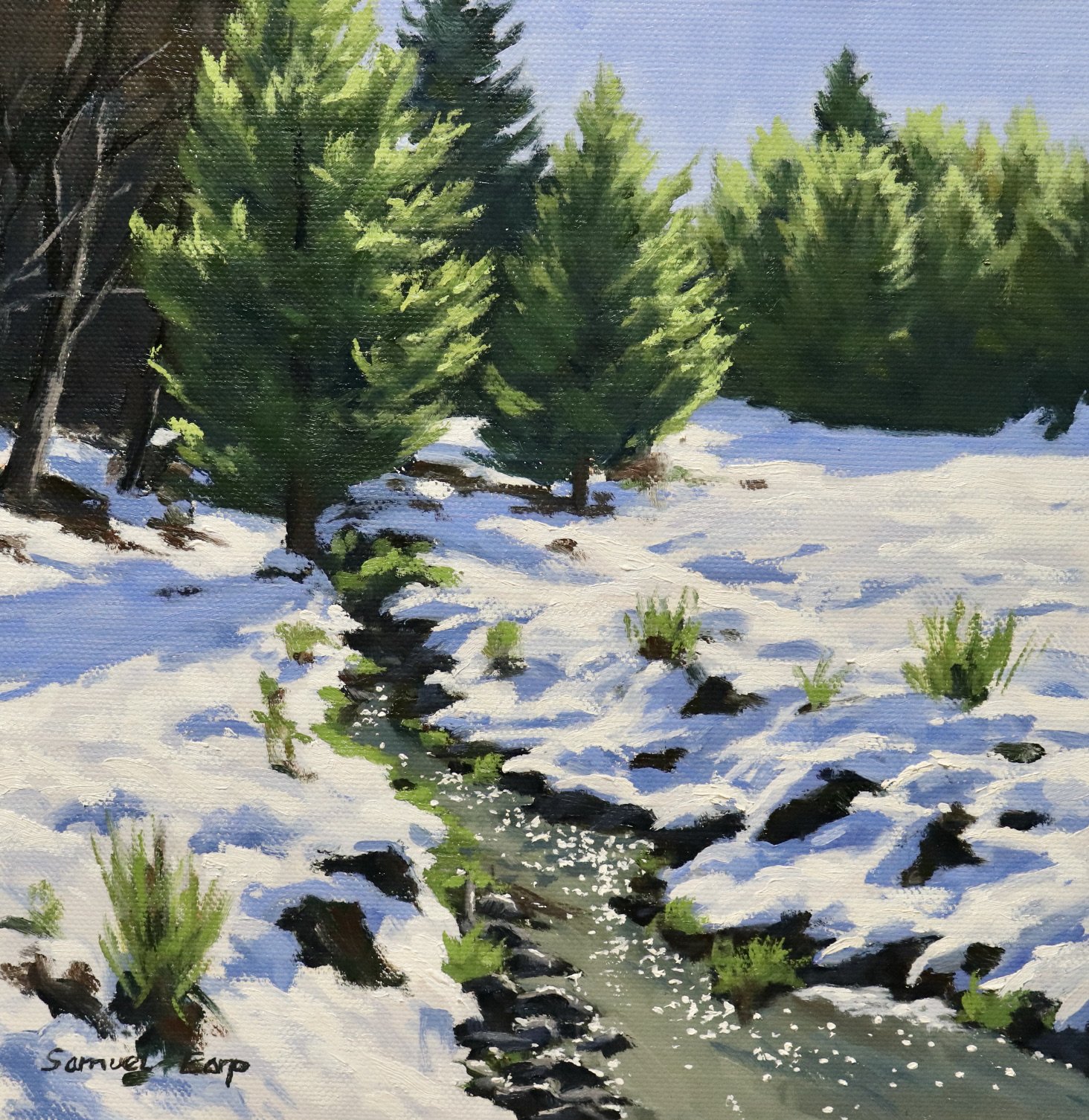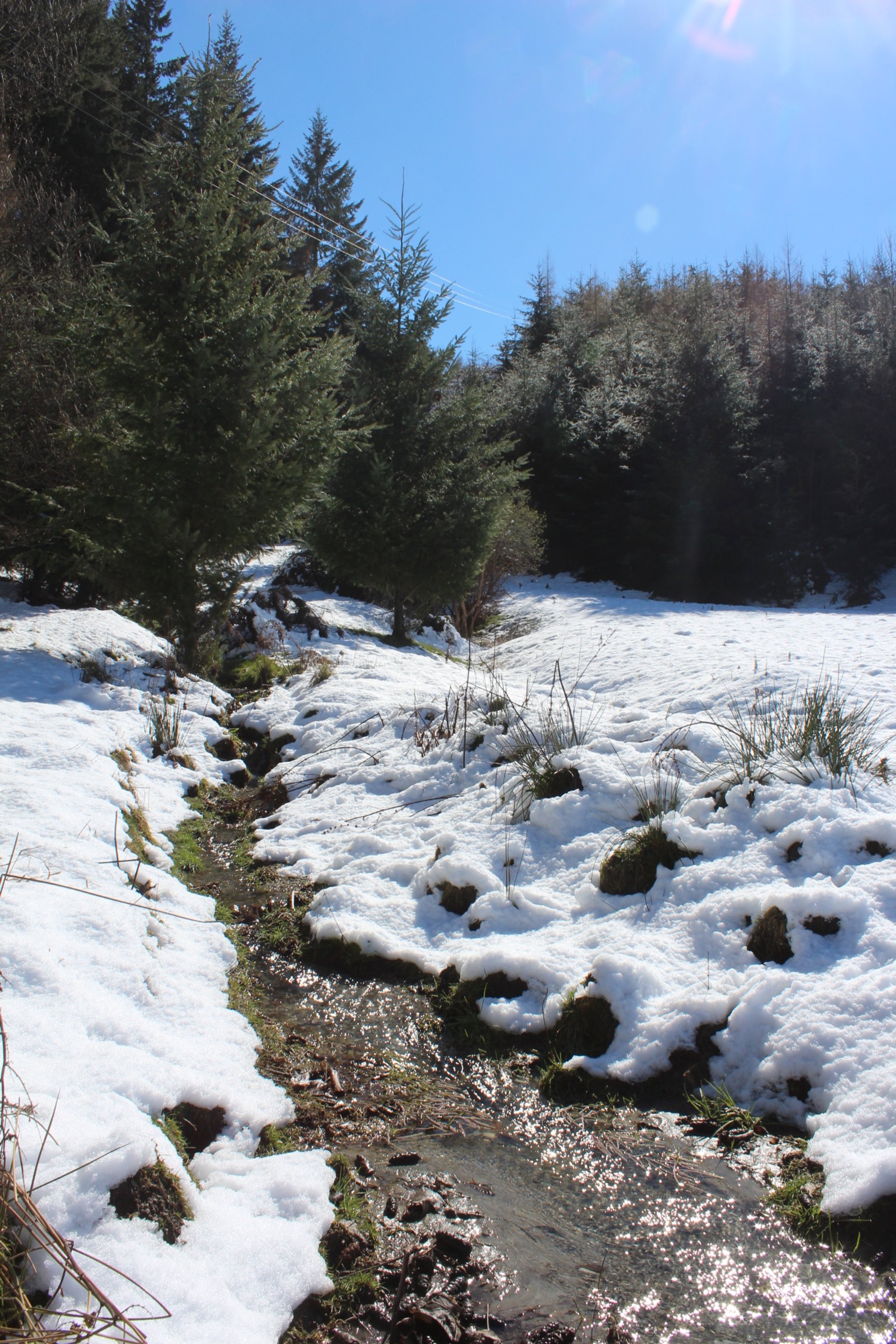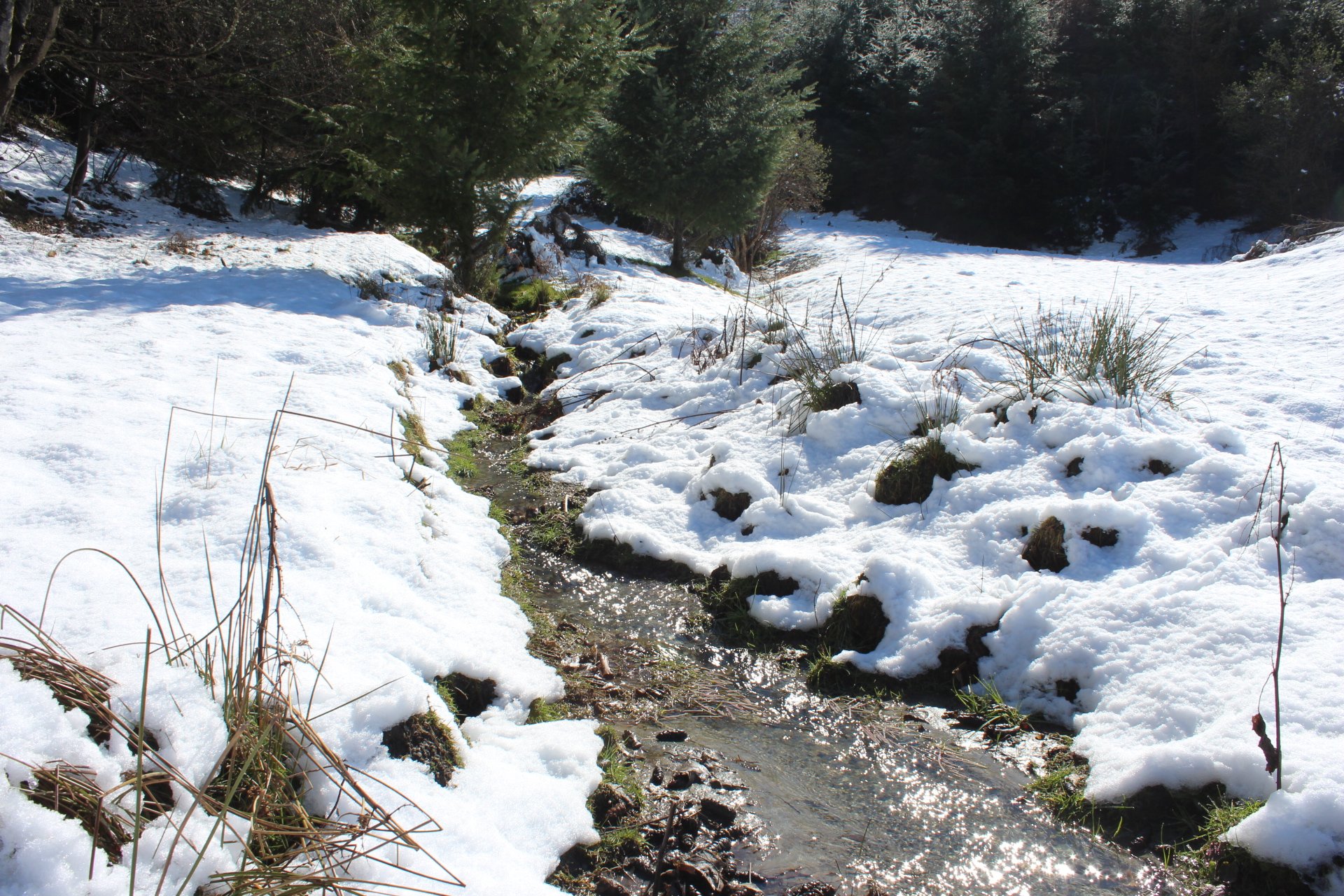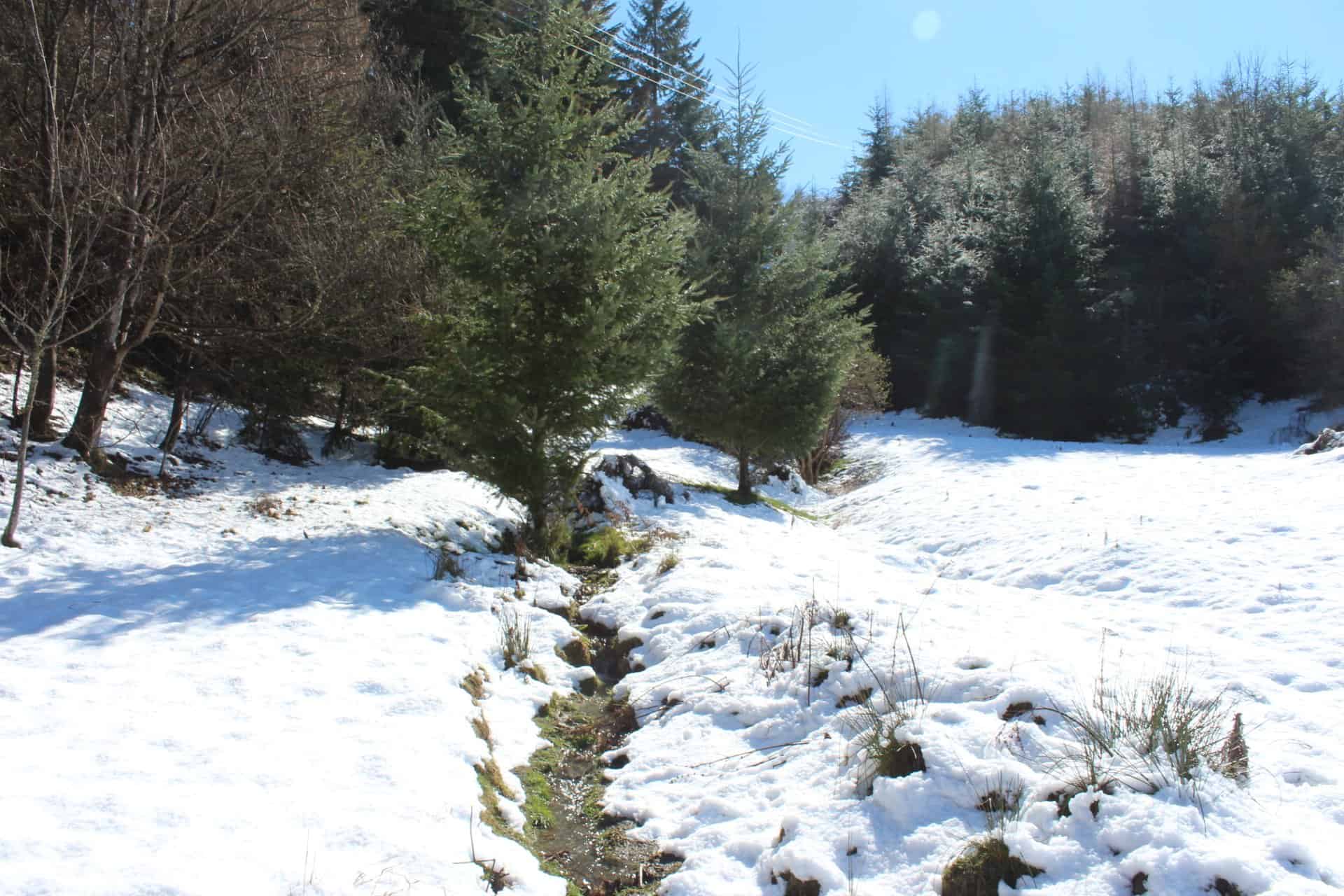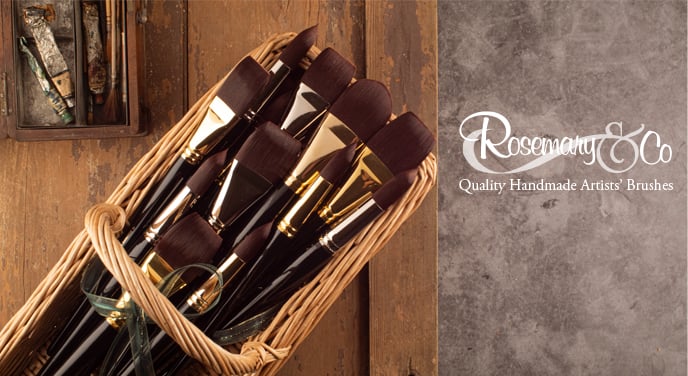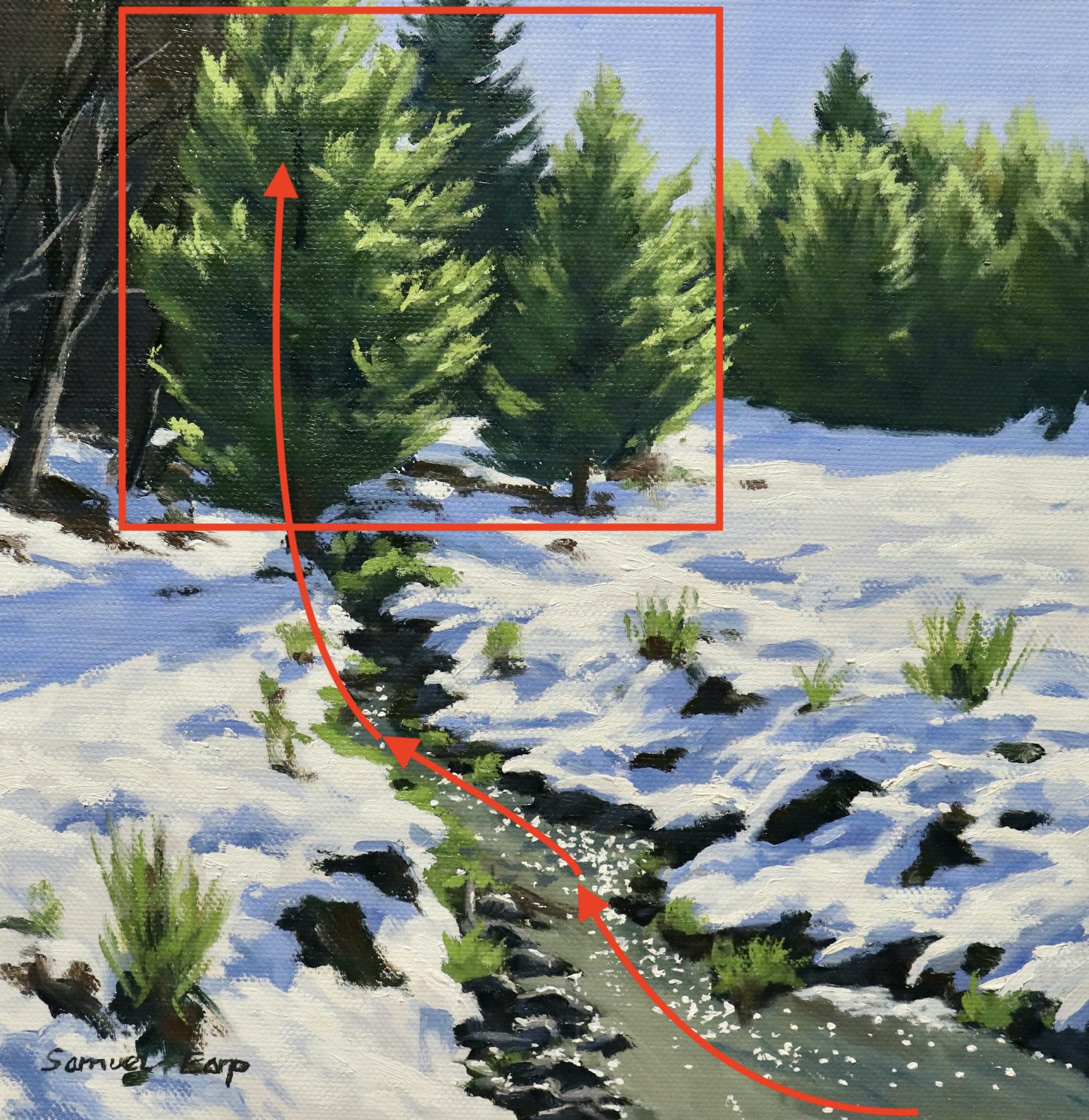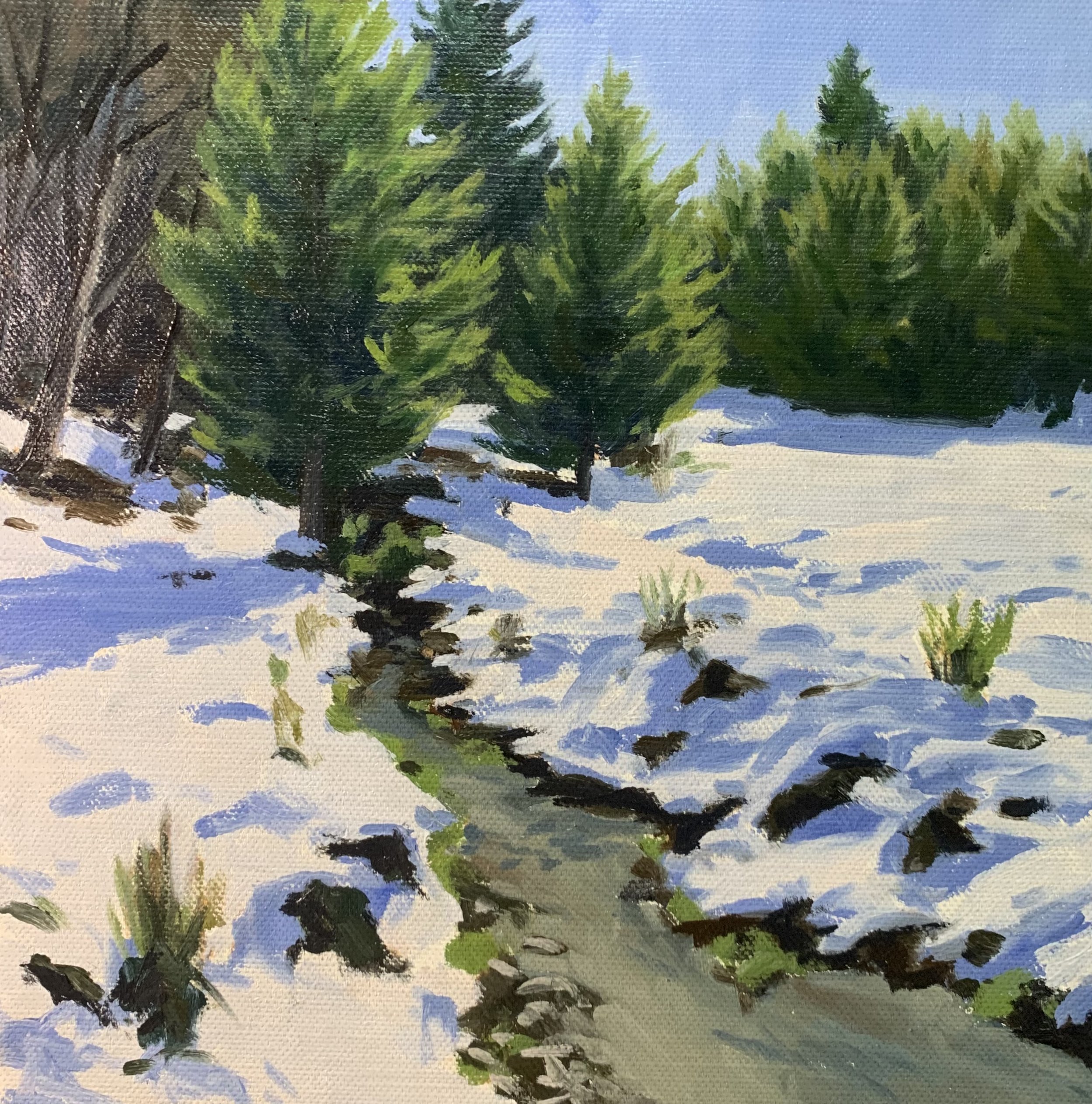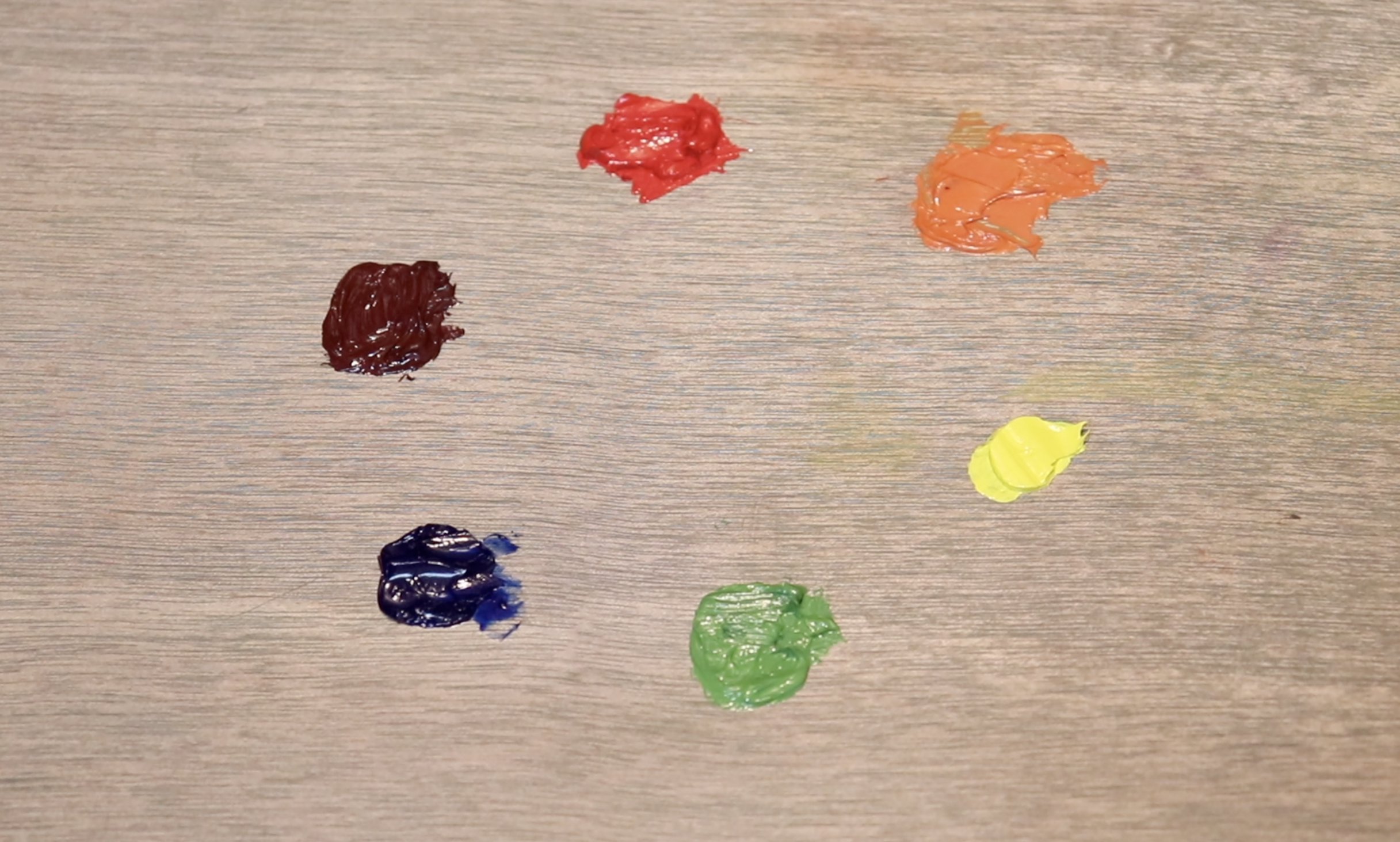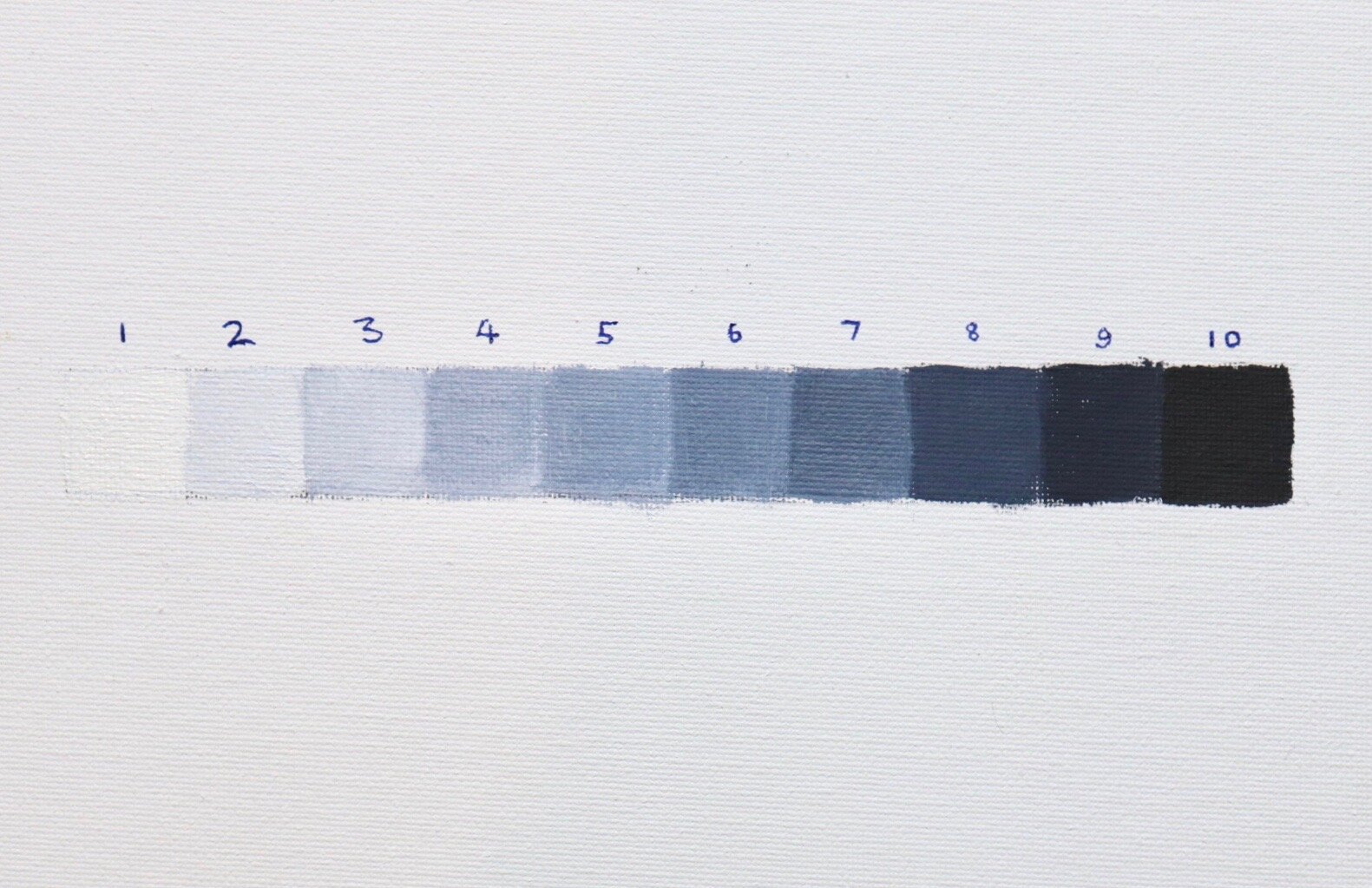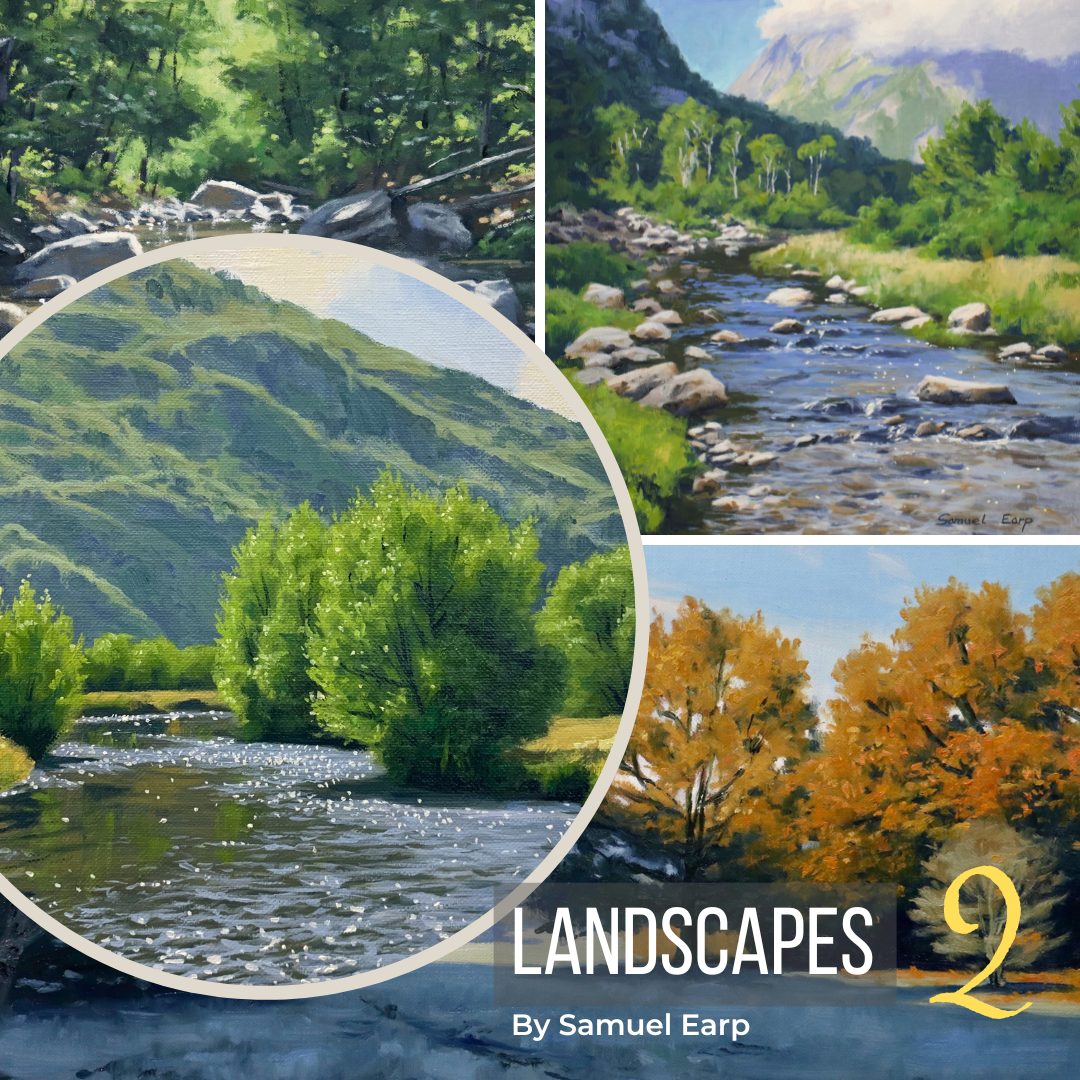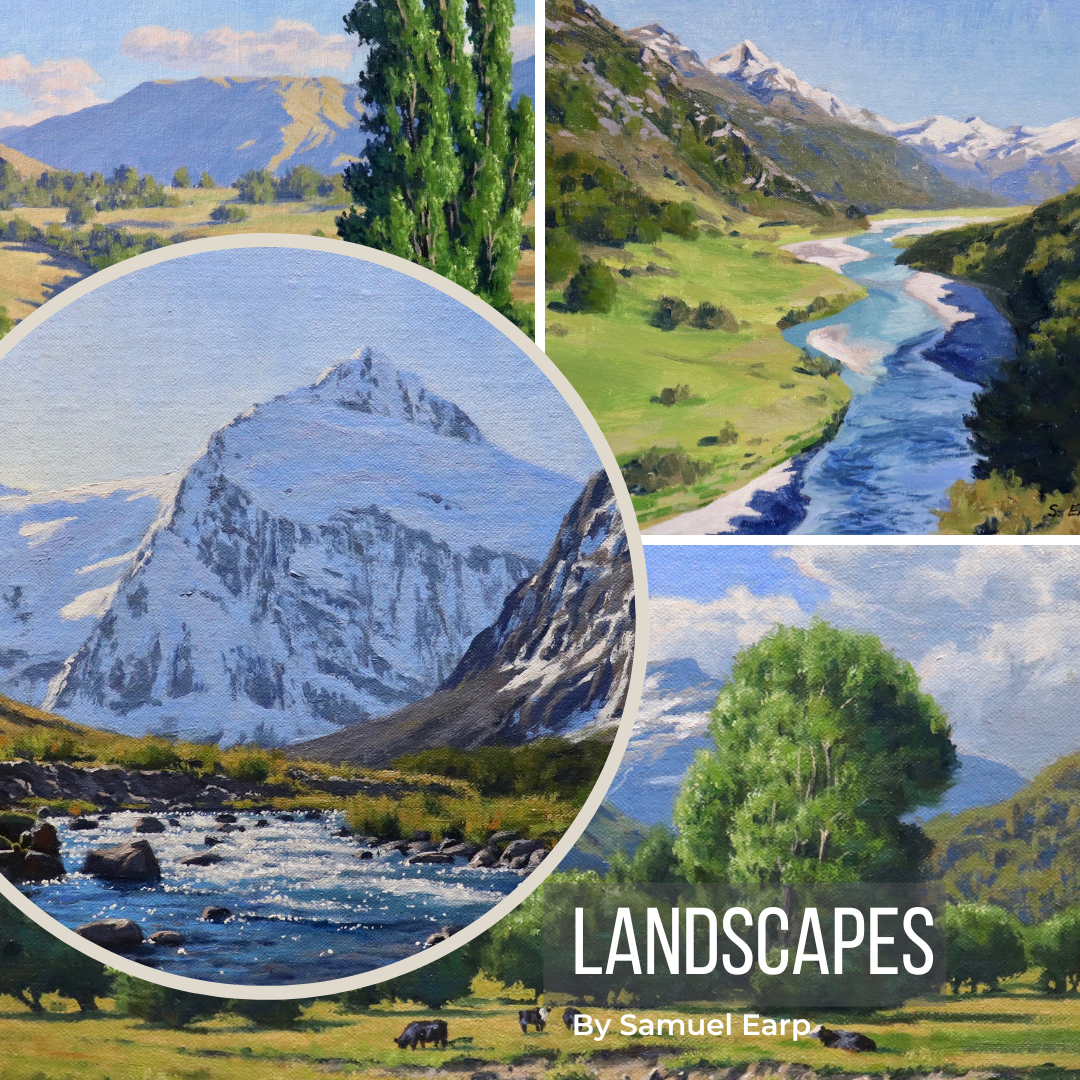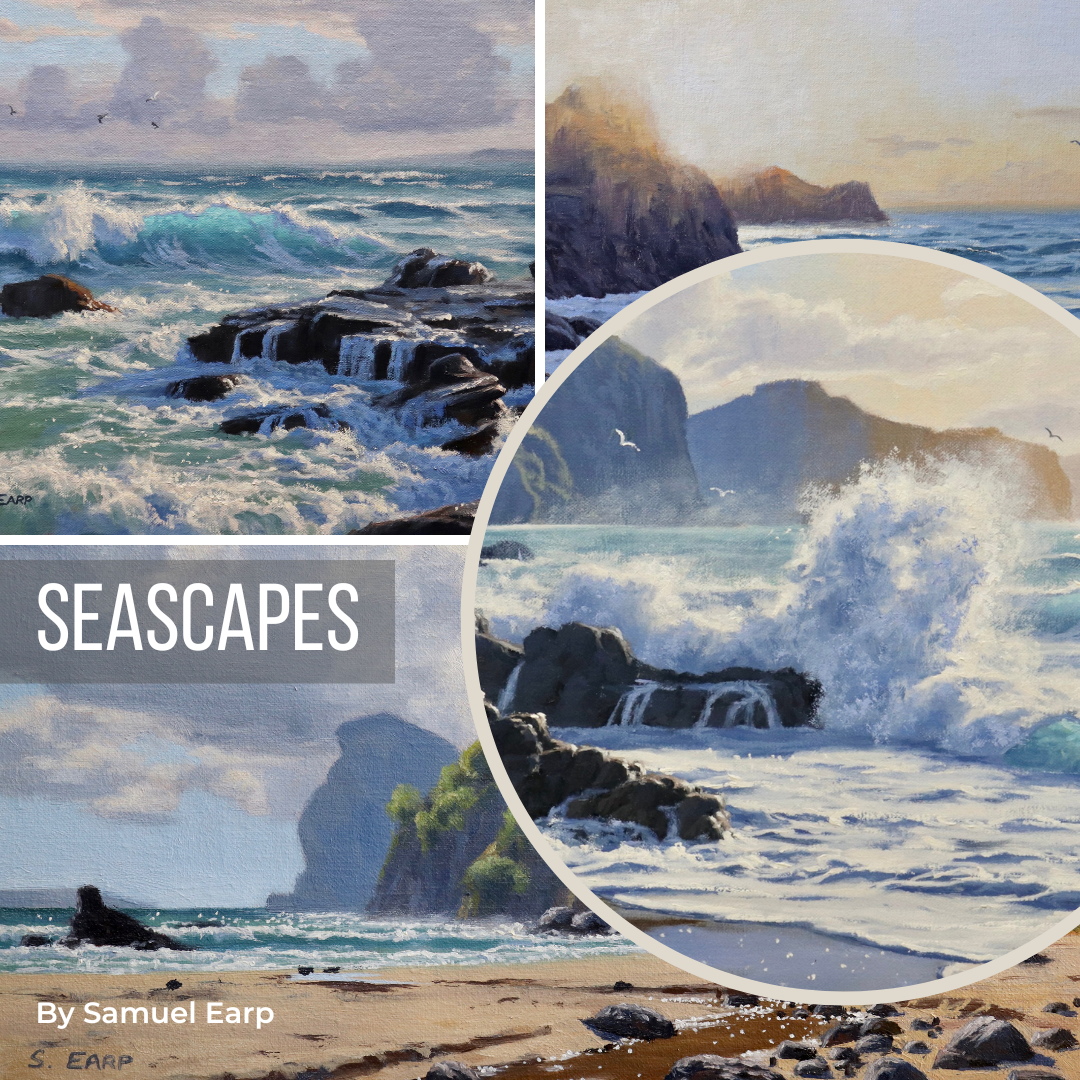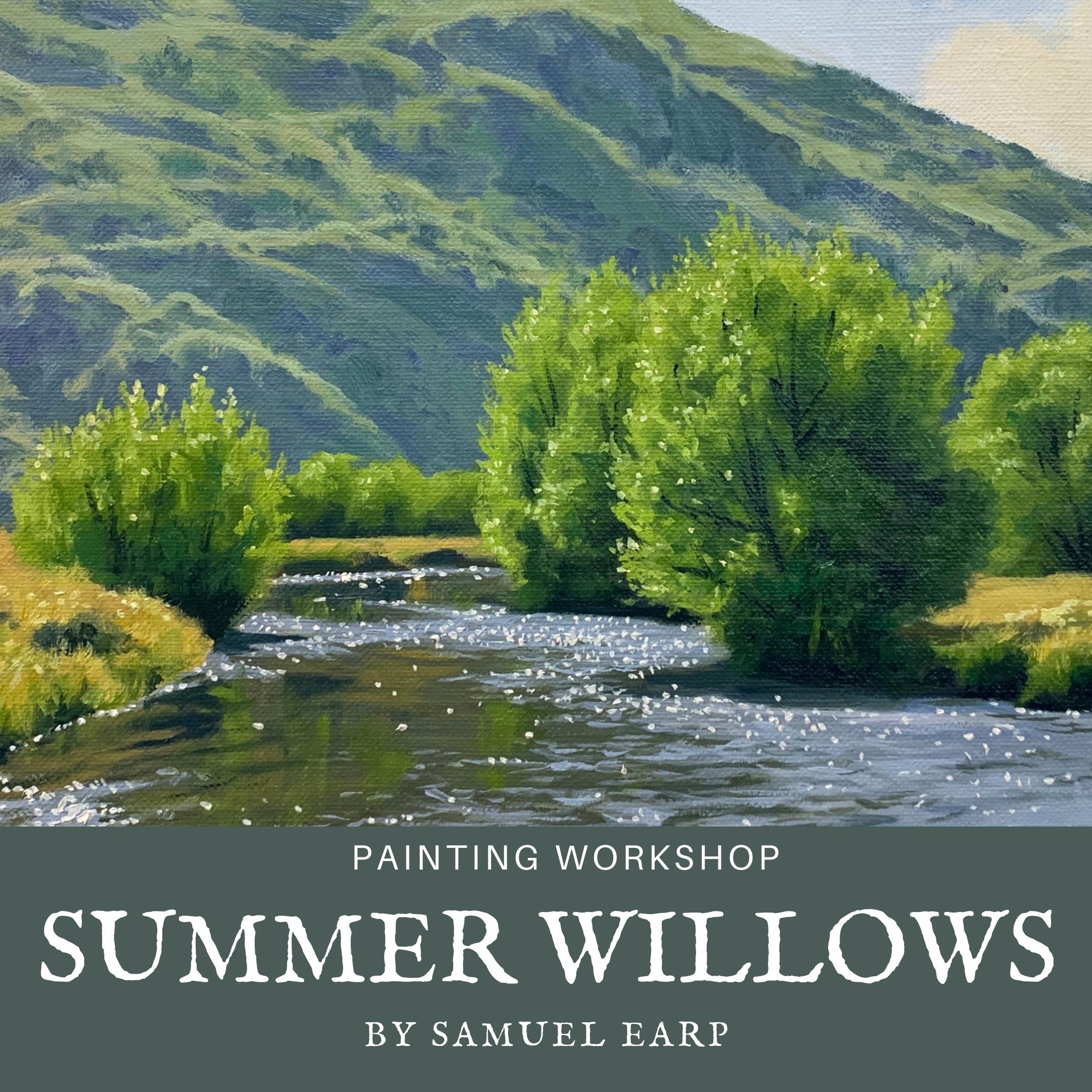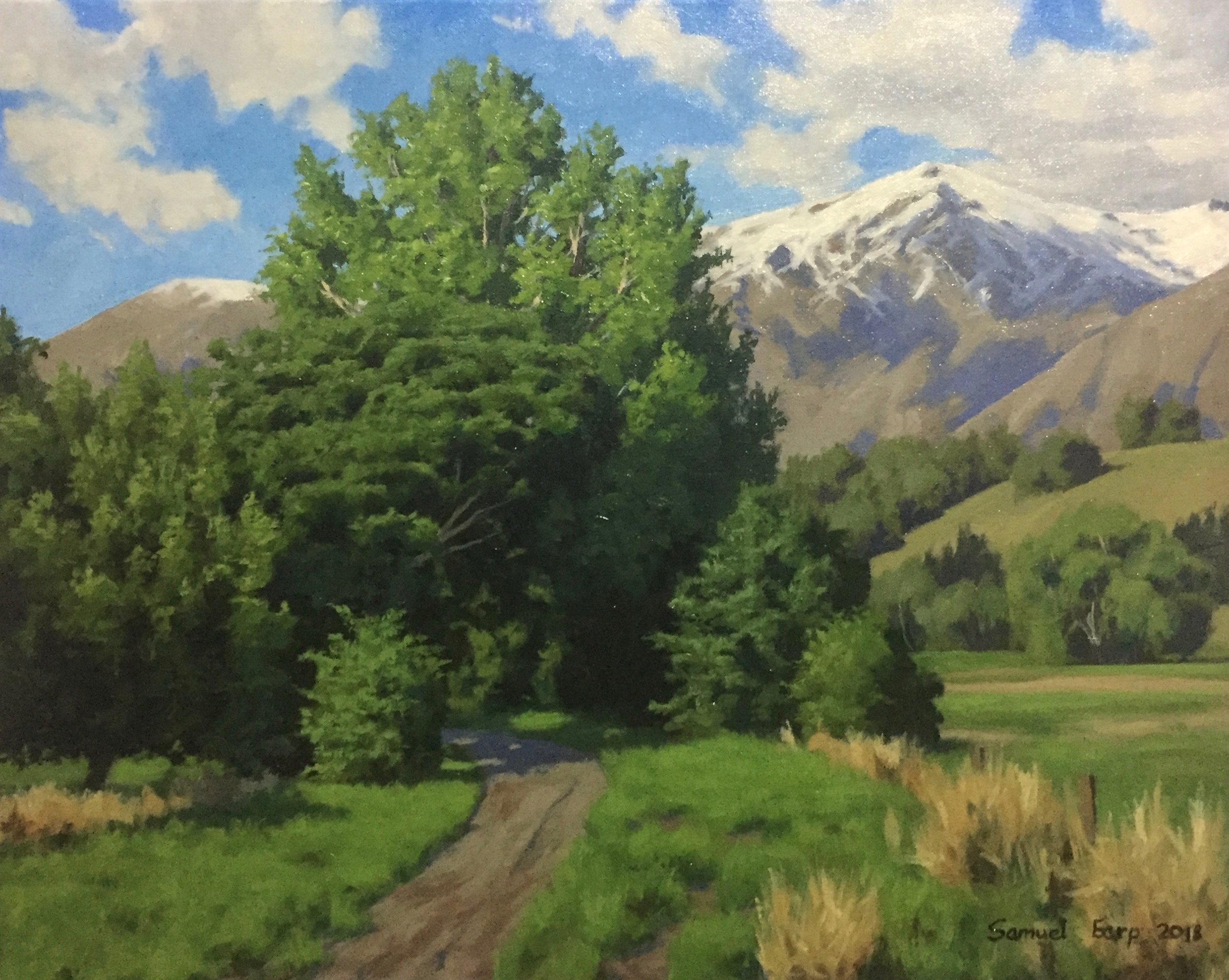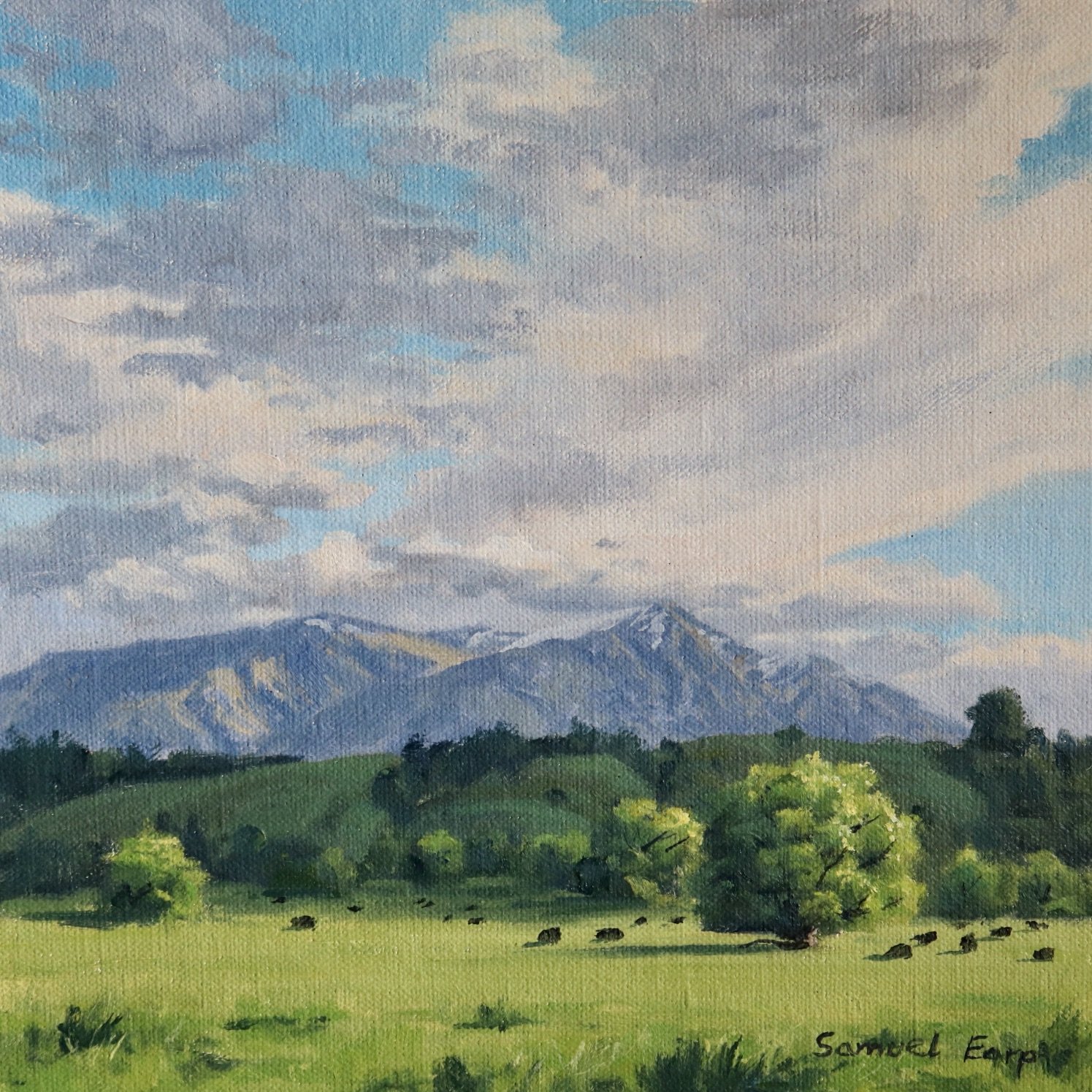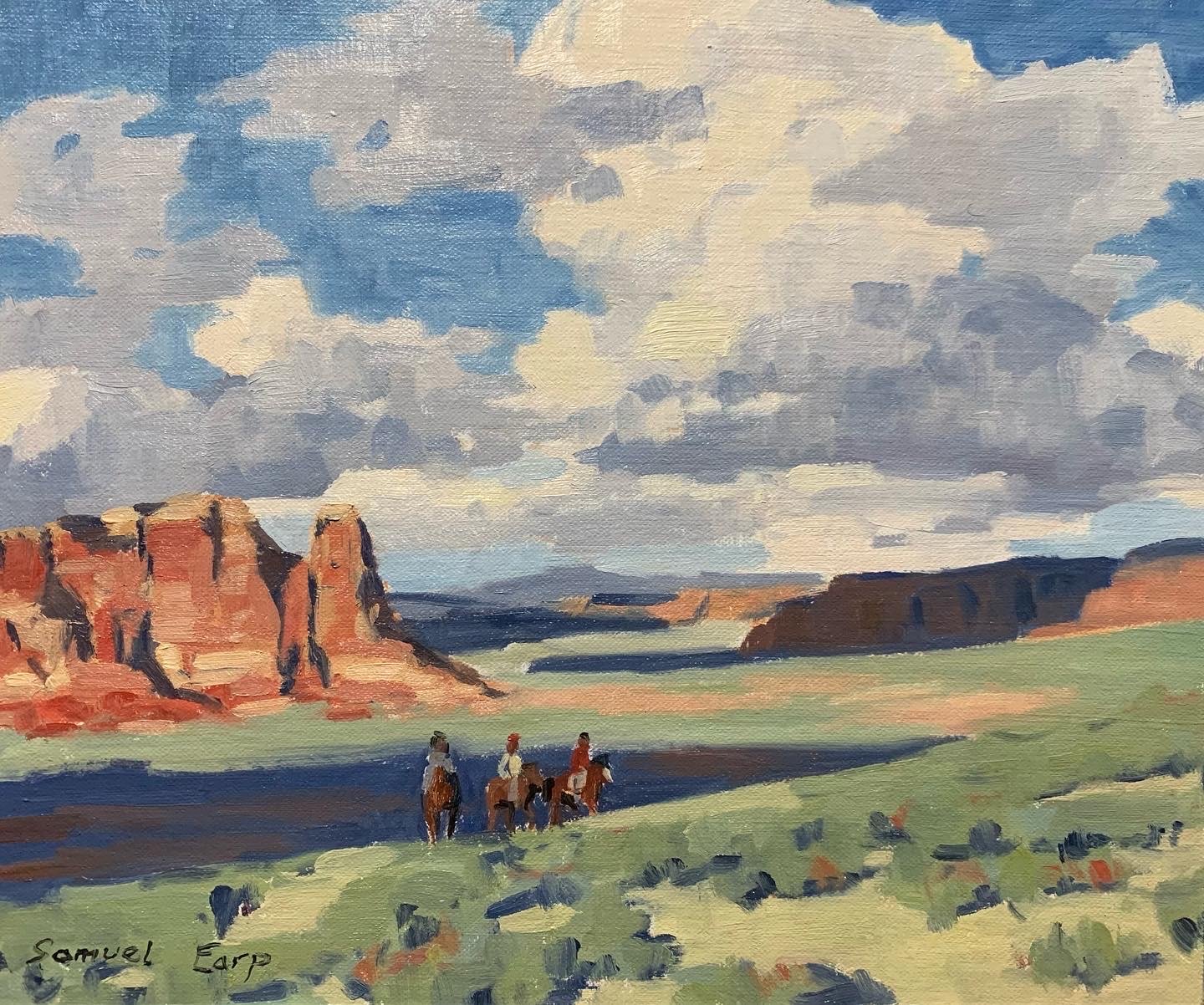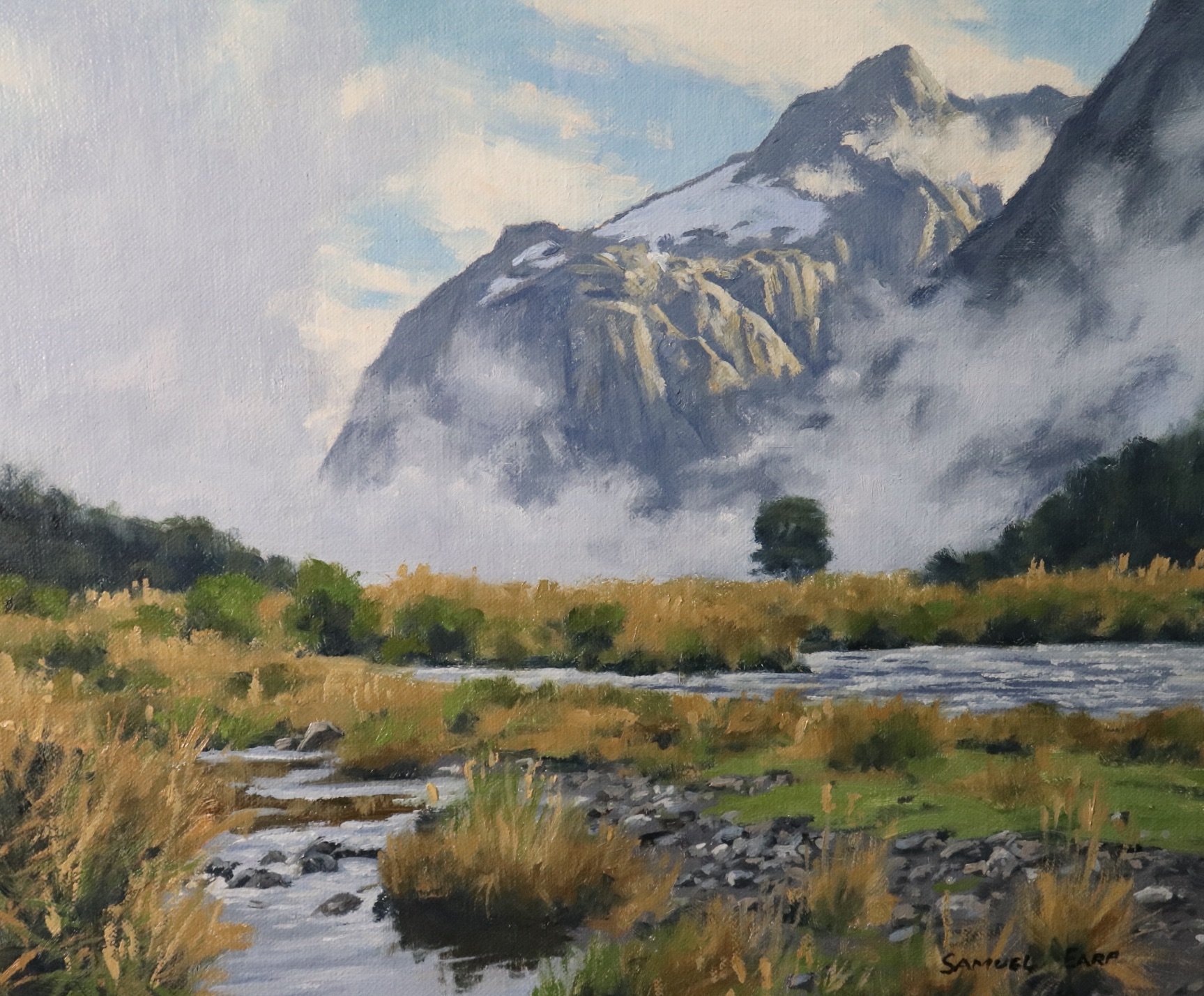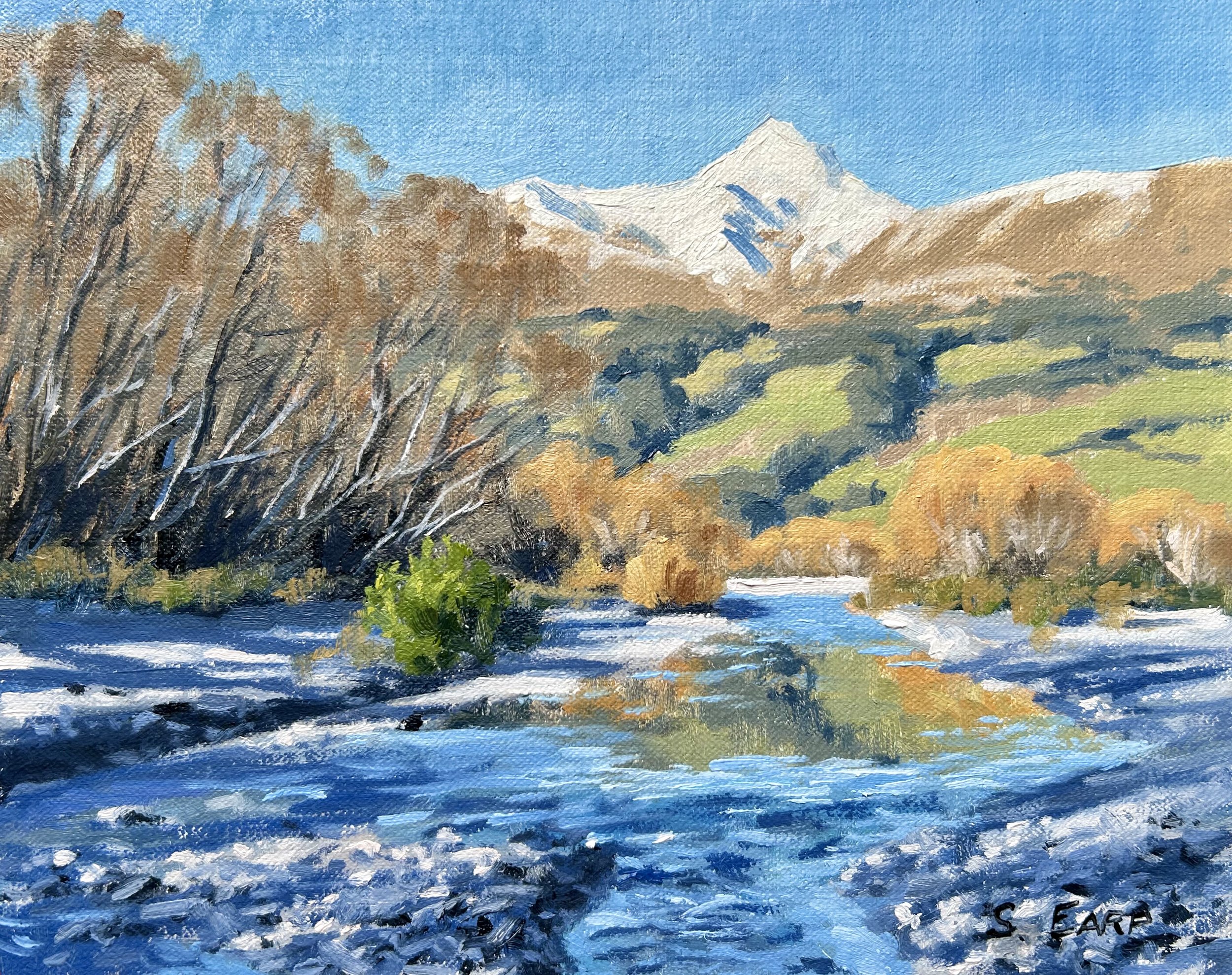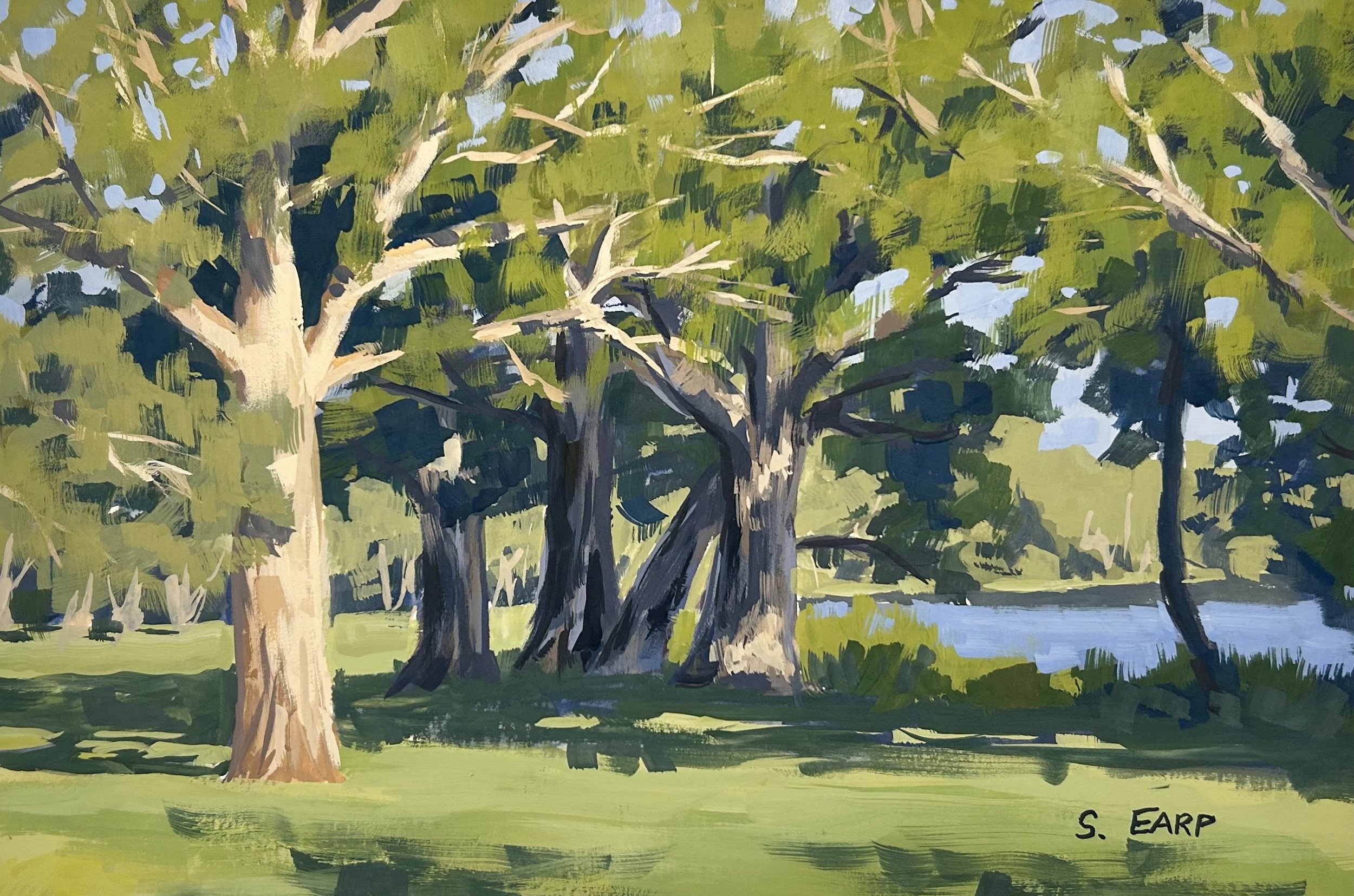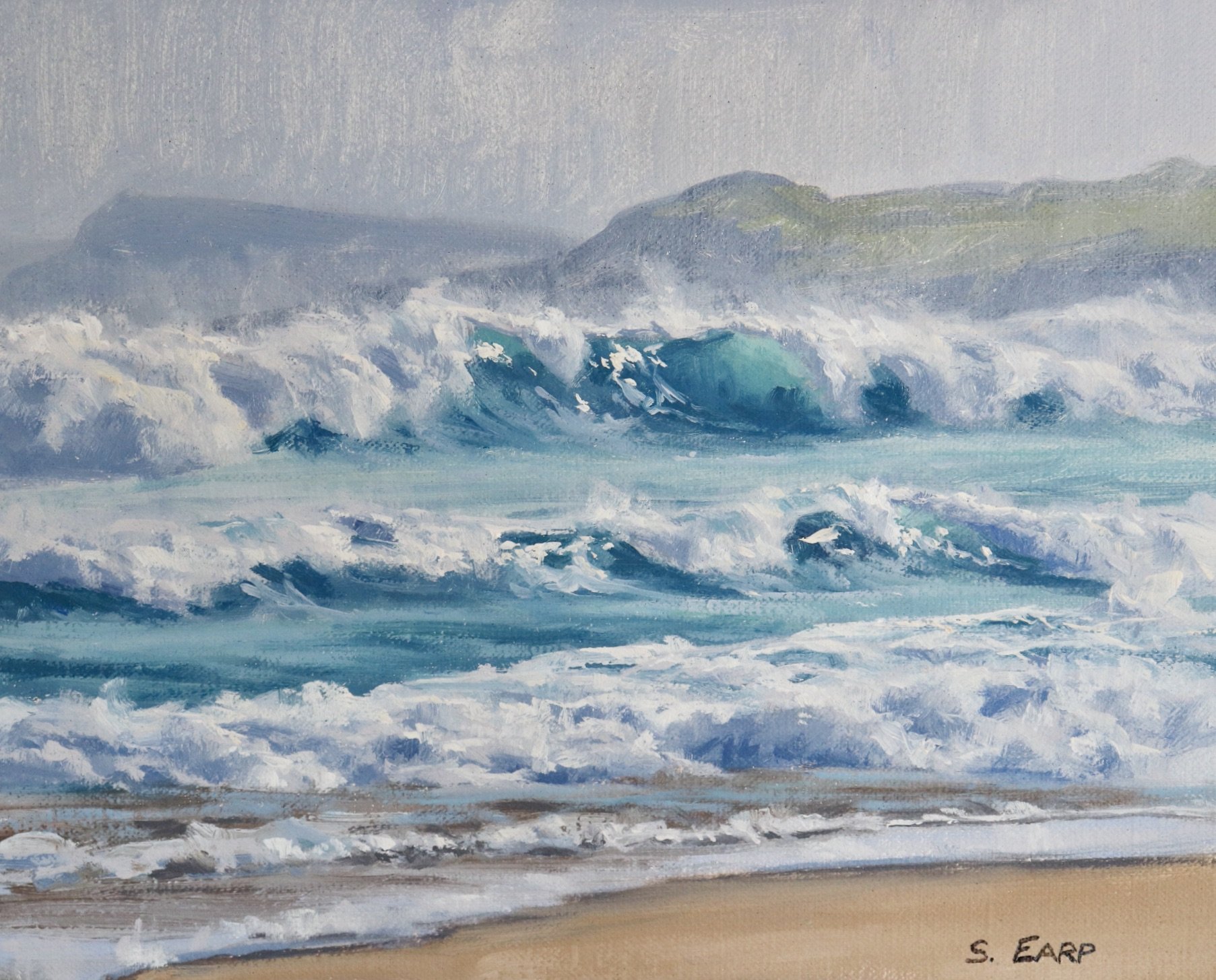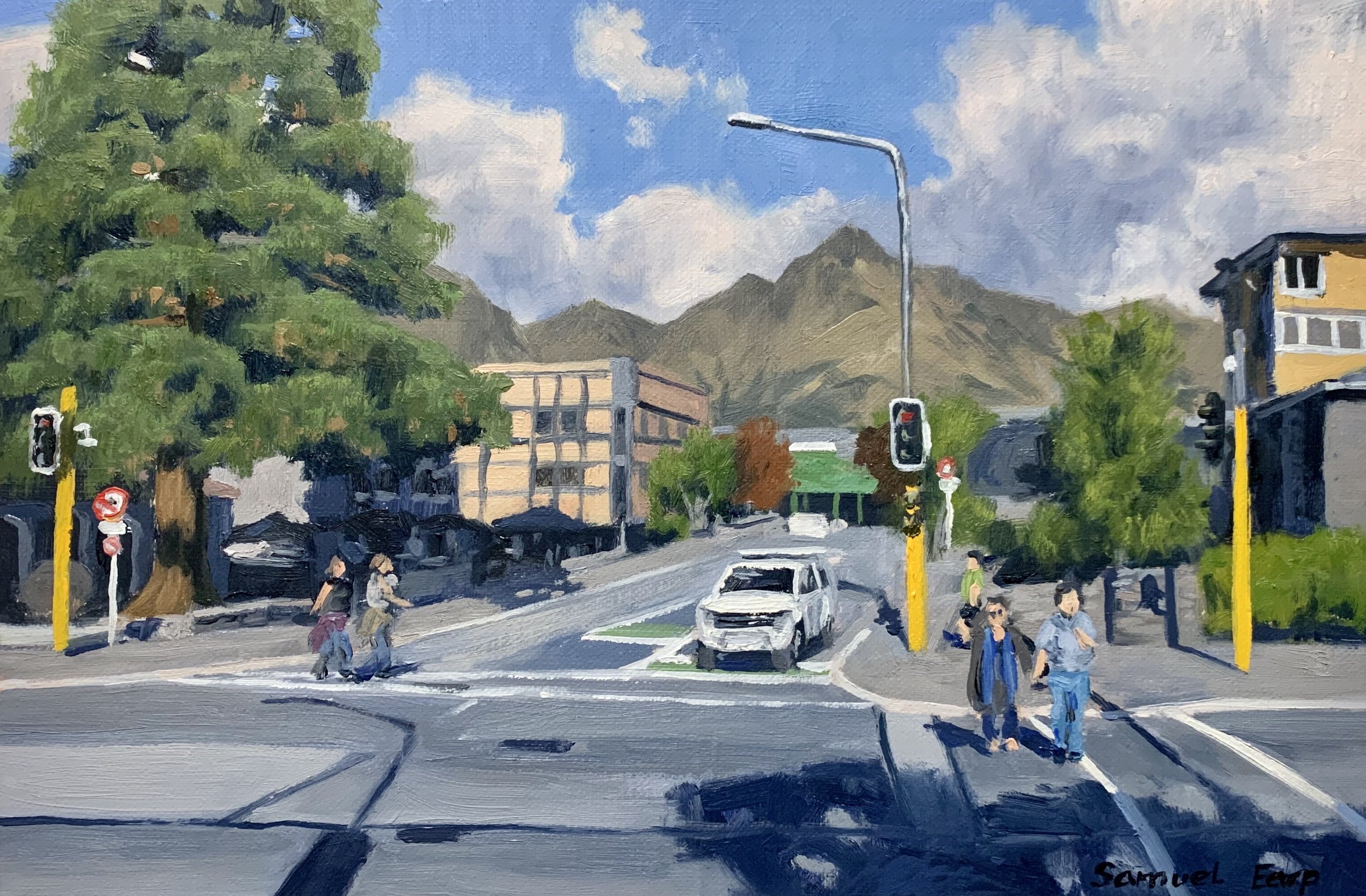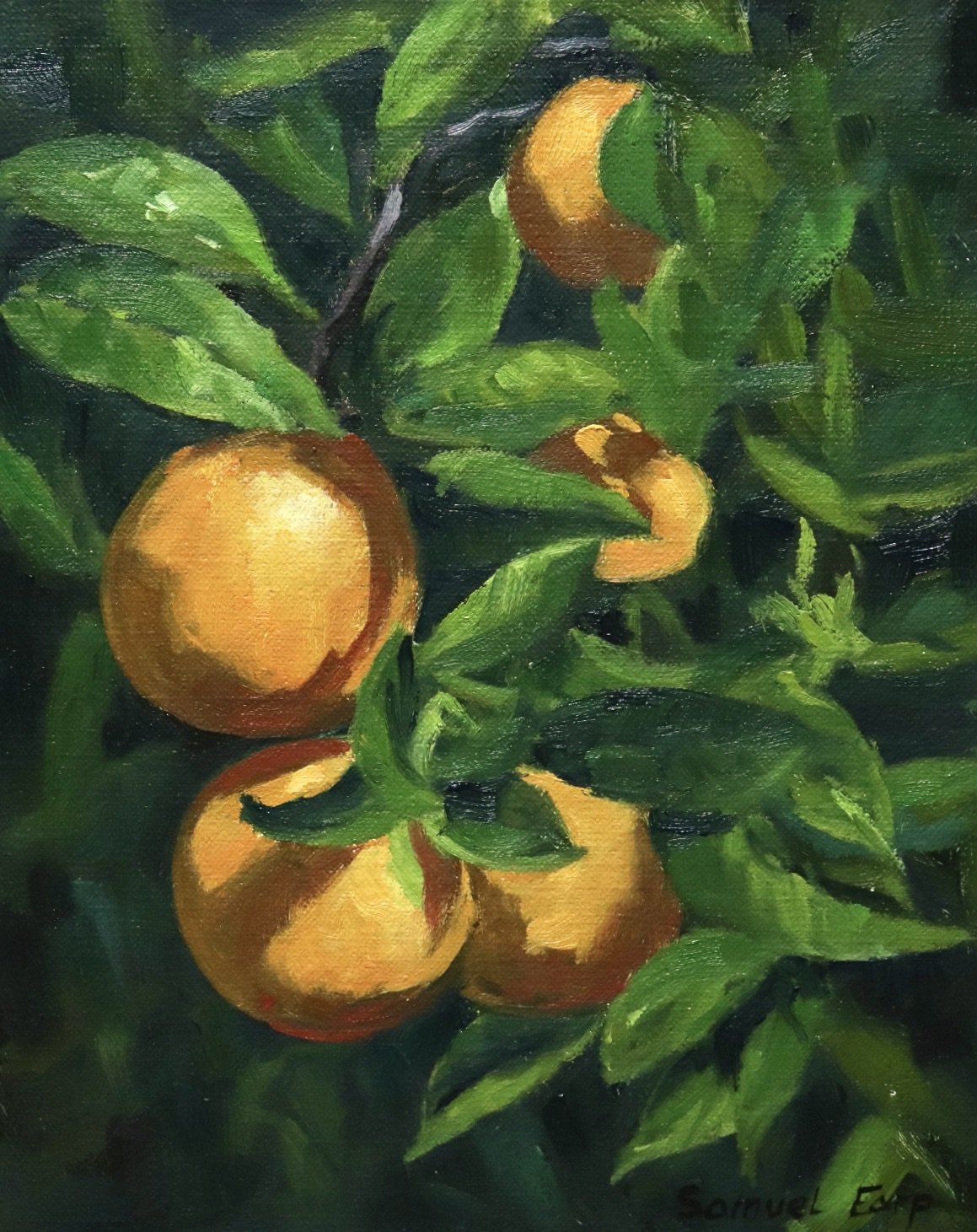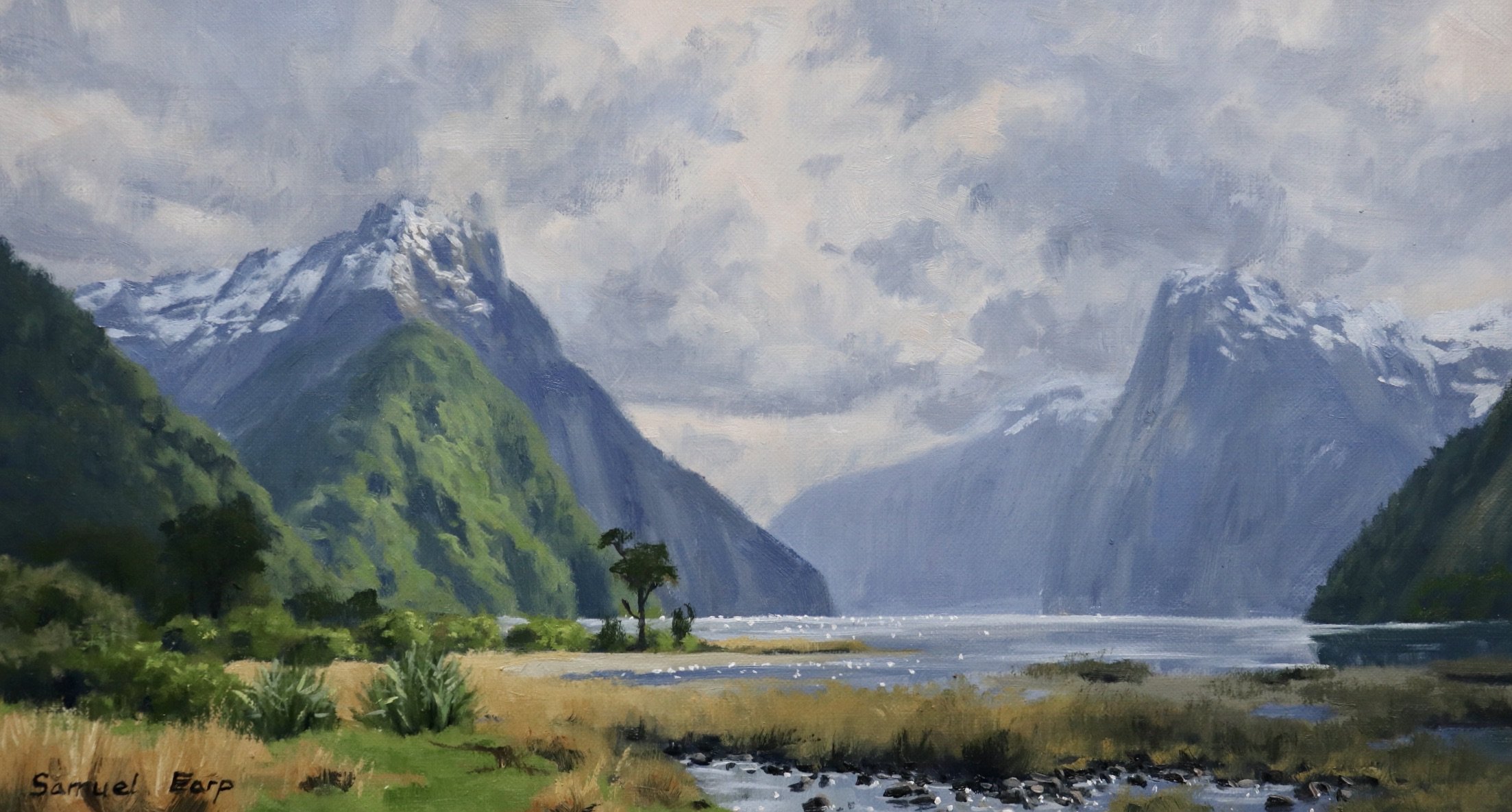Painting Workshop – Lesson Notes
Snow Stream
By Samuel Earp
Here are the lesson notes that accompanies the ‘Snow Stream’ painting tutorial video.
Suitable for oils and acrylics.
Reference Photos
Here are the reference photos I took and used in this painting. Please feel free to use or copy these photos if you would like to have a go at painting this art work.
Colours
The colours I used in this painting are as follows:
-
Titanium white
-
Burnt sienna
-
Yellow ochre
-
Cadmium yellow
-
Cadmium orange
-
Alizarin crimson
-
Ultramarine blue
-
Phthalo green
Need Oil Paints?
I personally use Blue Ridge Oil Colors which are available here. If you would like to purchase Blue Ridge oil paints click the link below.
Brushes
Here is a list of the brushes I used in this painting:
-
No.5 flat
-
No.3 flat
-
No.2 flat
-
No.3 filbert
-
No.1 round
-
No.0 round
Need Brushes?
I personally use Rosemary and Co brushes which are available here. If you would like to purchase Rosemary and Co brushes click the link below. (Note: if you purchase Rosemary and Co brushes using the link below I will receive a small commission).
Composition
This is a simple composition for a simple landscape painting. The two fir trees are the main focal area within the composition. This composition follows and ‘S’ composition where the stream is leading the eye towards the fir trees which is also providing rhythm and flow within the scene.
Painting Demonstration
I am painting on a 12” x 12” linen panel which I made myself. What I did here was mount medium weave linen to a craft panel which I bought from a hardware store.
I sketch the composition using a No.1 round brush with burnt sienna mixed with Liquin Original (Liquin). I am using Liquin as a medium to thin the paint and it also has the advantage of speeding up the drying time.
I begin by painting in the dark values and shadows first which are mainly in the fir trees and the shadows on the snow that are being cast by the trees.
The shadows in the trees are a mix of ultramarine blue and yellow ochre to make a dark green. I also allow some of the burnt sienna from the composition sketch to mix in with the green which adds another dimension to the colour.
The shadows in the snow have a blue cast to them and this is a mix of ultramarine blue, titanium white with a little burnt sienna and alizarin crimson.
The banks of the stream are a mix of ultramarine blue, yellow ochre and burnt sienna.
Now that my dark values are established I start painting all the areas that are in light. The sky is a simple mix of ultramarine blue and titanium white.
The tree foliage is a mix of yellow ochre, cadmium yellow, ultramarine blue and then I round off the mix with cadmuim orange which helps to take some of the saturation out of the green. I am keep the foliage a little darker so I have plenty of room to add lighter layers paint as I work through the painting.
I use the same green mix that I used for the trees as I do for the grass but with titanium white added and even a little phthalo green.
When it comes to painting snow keep in mind its not all white, there are half tones within the snow and a few highlights. This is what will make the snow look realistic. I paint some light half tones within the snow using a mix of titanium white with a little ultramarine blue, burnt sienna and alizarin crimson.
I paint the suggestion of deciduous trees in the upper left side of the painting using a mix of ultramarine blue, burnt sienna and yellow ochre. I paint the shadow areas of the stems and branches with a mix of ultramarine blue and burnt sienna.
I mix the colours for the stream using ultramarine blue, yellow ochre, titanium white and a little burnt sienna.
You may notice I am using a lot of similar colour combinations for the various zones in this painting. This helps to create colour harmony within the painting.
At this point the painting I had allowed it to dry so I could begin adding detail and more layers of paint to the trees and snow. Essentially I am using the same colours I used during the blocking-in stage of the painting but adding lighter layers of colour to build up the form of the elements.
I use smaller brushes for the trees as I build up the details, mainly No.3 flat brushes. I then worked on modelling the form of the trees.
I add more lighter layers of paint to the snow but I still keep the value of the paint a little darker. I’ll then be saving my lightest values, the snow highlights until the very end of the painting.
I finish the painting by adding my lightest values. This includes the highlights in the tree foliage which is a mix of yellow ochre, cadmium yellow, ultramarine blue, cadmium orange and titanium white. I have also painted some more half tones within the tree canopies with a mix of yellow ochre, cadmium yellow, ultramarine blue and phthalo green. I use a lot of ultramarine blue in the mix.
I apply the final highlights to the snow using a mix of titanium white with a dash of yellow ochre. This is the lightest of my lights. I also use the same mix to paint the sparkles on the water.
I have also painted a bit of reflected light in the snow shadows using a mix of ultramarine blue, titanium white and a little alizarin crimson.
Colours and Values
Throughout the video you will hear me talk about colours and values. It is important to have a basic understanding of colour theory and values when painting as it will make colour mixing easier for you. Luckily it’s easy to learn the basics and the rest is just brush mileage.
Colours Theory Terms
Below are some terms I use throughout the video and their meanings.
Hue: This refers to the main attributes of a colour and is dependent on its dominant wavelength, irrespective of how light or dark the colour is. For example, the colour is discernible as blue or a red etc.
Saturation or Chroma: This refers to the purity or intensity of a colour. You can reduce the saturation of a colour by adding a neutral grey or an opposite colour on the colour wheel.
Value: This is how light or dark a subject is. Getting your values correct is one of the keys in the success of a painting.
Tone: This is a broad term for describing a colour that is not a pure hue or black or white. It is a widely misunderstood term.
The Colour Wheel
For the benefit of people who are new to painting that are watching this video I will briefly go over the basics of the colour wheel. Knowing how the colour wheel this works can really help you with colour mixing.
Above is a simplified colour wheel. The colour wheel contains three primary colour blue, red and yellow and three secondary colours orange, green and violet.
When these colours are arranged on the colour wheel a primary colour is always opposite a secondary colour and are known as compliments or complimentary opposites. So, blue is opposite to orange, red is opposite to green and yellow is opposite to violet.
So why is this important?
If you want to desaturate a colour you can do this by mixing its complimentary opposite as the two colours will cancel each other out. In this manner you can create some neutral greys and browns especially when combined with white.
Complimentary colours also look good next to each other in a painting, for example greens often look more harmonious in a landscape if there are some reds amongst the mix or colours that contain red. If you look closely in nature, you’ll see naturally occurring complimentary opposites everywhere.
The Value Scale
Value is how light or dark a colour is and is perhaps one of the most important concepts in painting. The success of a painting rests on the relationship between the values in the painting. If they are not working and not in harmony, then the whole painting can lack any kind of depth.
Values in art work are represented on a scale with the highest value being white and the lowest value being black. The greys in between are known as mid or half tones.
In general, you will find your darkest darks and lightest lights in the foreground of a landscape. However, as landforms recede into the distance darks are not quite dark and lights are not quite light as the tonal scale narrows.
If you are unsure of where your light and dark values are in the scene you are painting, switch your reference photo to black and white and you’ll be able to clearly see where your light and dark values are.
In general, you’ll find that the sky is often one of the lightest values in the landscape. Grass is also generally lighter in value. Rocks and mountain faces are darker in value and often occupy the mid-tone range of the value scale. Trees are generally some of the darkest values in the landscape.
New Painting Video Every Month on Patreon
Subscribe to my Patreon channel and get instant access to all of my painting videos and get a new video every month for just $5 per month.
More Painting Tutorial Videos Available
